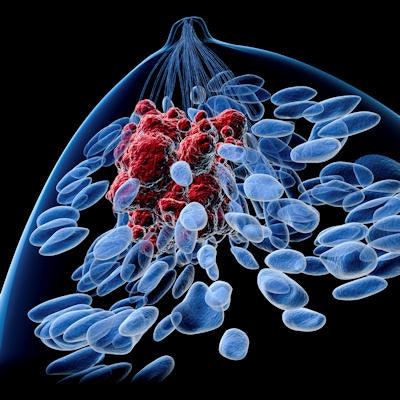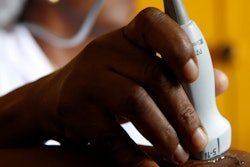
Breast cancer risk after a false-positive mammogram depends on individual patient characteristics and follow-up, researchers from the Karolinska Institute in Stockholm have reported.
A team led by Xinhe Mao found that women who receive a false-positive result during mammography screening have a higher long-term risk of breast cancer compared to other women. However, the author also noted in an article published on 2 November in JAMA Oncology that this risk varies based on age, breast density, and the time elapsed since the false-positive result.
“Short-term intensive surveillance programs and personalized monitoring might benefit women who have had a false-positive result. Further studies are needed to investigate this,” Mao told AuntMinnieEurope.com. “It is also important for women with a false positive mammography result to have a long-term awareness of breast cancer.”
While false-positive screening mammography results are not a rare occurrence, the researchers pointed out that it’s unclear what the long-term outcomes of these are in women.
Mao and co-authors sought to explore such outcomes, as well as study whether the links between false-positive results and the risk of developing breast cancer differ by baseline characteristics, tumor characteristics, and time since the false-positive result.
They included data collected between 1991 and 2020 from 497,343 women with a median age of 52 years. The women participated in the Karolinska Mammography Project for Risk Prediction of Breast Cancer (KARMA) study.
The team found that the 20-year cumulative incidence of breast cancer was 11.3% among women with a false-positive result compared with 7.3% among those without such a result. This included an adjusted hazard ratio (HR) of 1.61 for the false-positive group.
However, the team also found higher risk for women ages 60 to 75, women with lower mammographic breast density, and women who underwent a biopsy at recall.
| Odds of developing breast cancer after false-positive mammogram | |
|---|---|
| Patient characteristic | HR |
| Women ages 60 to 75 | 2.02 |
| Lower mammographic breast density | 4.65 |
| Undergoing biopsy at recall | 1.77 |
| No biopsy | 1.51 |
The team reported that cancers after a false-positive result were more likely to be detected on the ipsilateral side of the false-positive result (HR, 1.92). Additionally, cancers developed more commonly during the first four years of follow-up. This included HR values of 2.57 during the first two years and 1.93 from after two years to four years, respectively.
The researchers also found no significant difference for different tumor characteristics aside from larger tumor size, which Mao called a surprising finding. Finally, the team reported that high-risk women with a false-positive result had an 84% higher rate of breast cancer than those below the high-risk threshold. This included an HR value of 1.84 for the high-risk group.
Mao told AuntMinnieEurope.com that while individualized risk assessment was not investigated in this study, the team believes that screening could be tailored based on this. This would include more frequent screening for high-risk women and alternative screening modalities being used to further improve breast cancer detection.
“In the future, we will investigate how to motivate women to attend mammography screenings,” Mao added. “Additionally, we will continue our work to gain a deeper understanding of women who are diagnosed with breast cancer not during a screening visit, but between two screening visits.”
The study can be found in its entirety here.



















